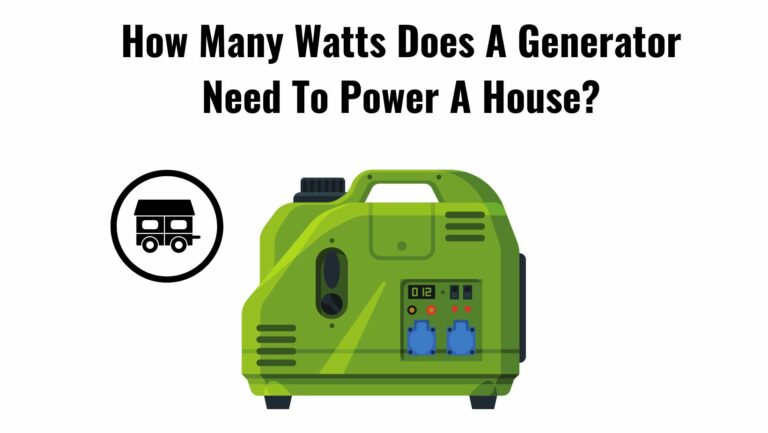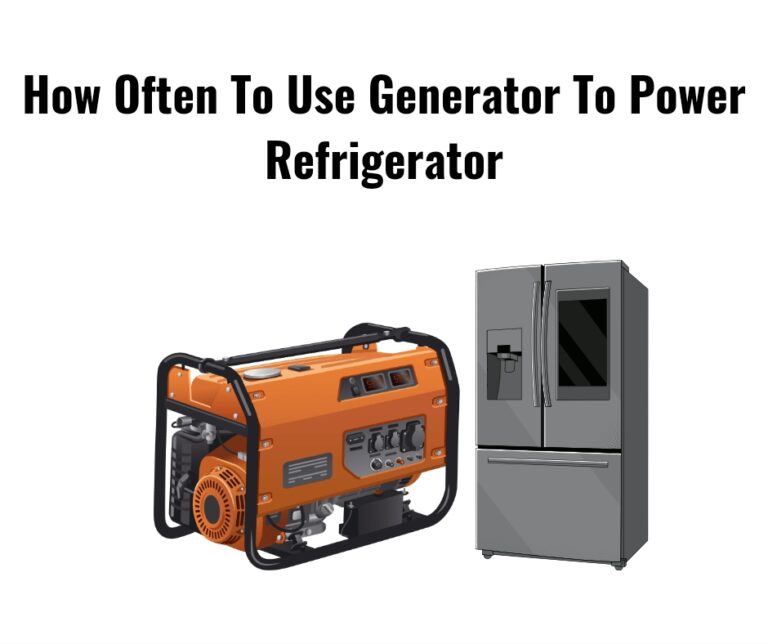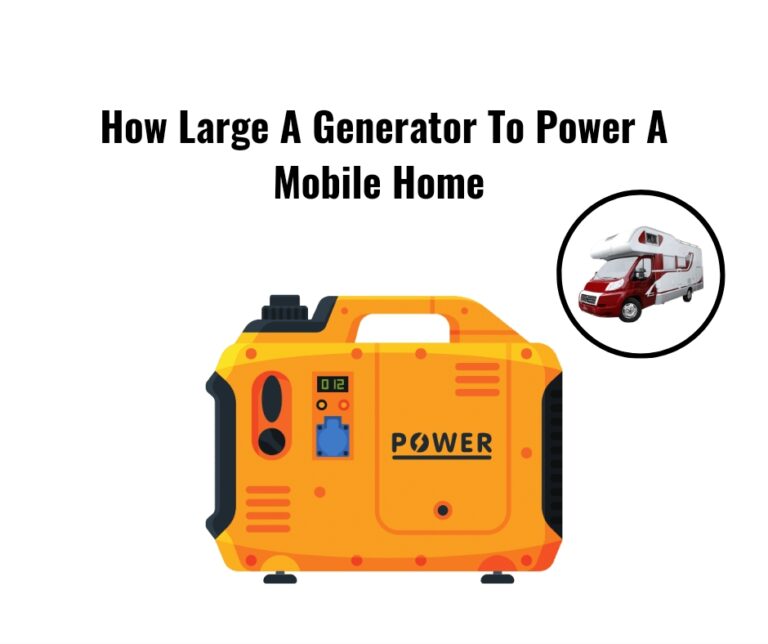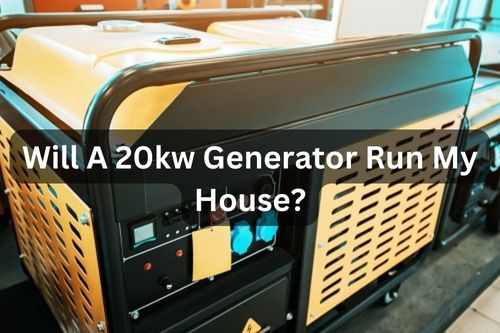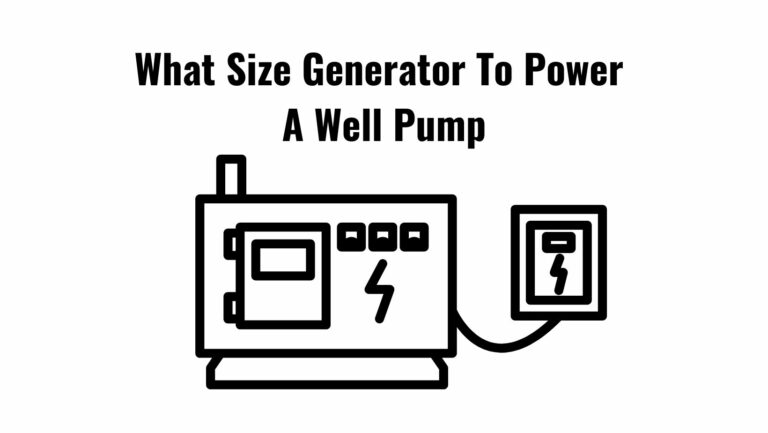
A 7500-watt generator is a device that generates electrical power using an engine-driven alternator. It provides 7500 watts of continuous power and can handle short bursts of up to 9,375 watts. This makes it suitable for powering a wide range of appliances and tools in homes and small businesses.
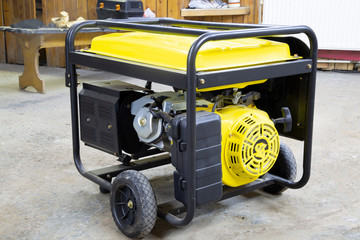
The importance of having a generator in homes and businesses cannot be overstated. It provides a reliable source of power during power outages, ensuring that essential appliances and devices continue to function. In addition, it can provide power in remote areas where electricity is not available, and can be used during outdoor events, camping trips, and other activities where electricity is needed.
Understanding the capabilities and limitations of a 7500-watt generator is crucial for making the most out of this device. In this blog post, we will delve into the power output of a 7500-watt generator, the appliances and tools it can power, and the factors that determine its power output. We will also discuss how to safely and efficiently operate a 7500-watt generator and provide tips for extending its lifespan. So, let’s get started and learn more about this valuable tool!
How much power can a 7500-watt generator produce?
When it comes to buying a generator, understanding the amount of power it can produce is crucial. The power output of a generator is measured in watts, and a 7500-watt generator is considered to be a mid-sized option. In this section, we will explore the concepts of watts and amps, compare 7500 watts to other generator capacities, and explain the difference between running and starting watts.
Understanding the concept of watts and amps
Watt (W) is a unit of power that measures the rate at which energy is being used, while amp (A) is a unit of electric current. To put it simply, the more watts a generator produces, the more appliances and tools it can power at once. For example, a 100-watt bulb will consume 100 watts of power when it’s turned on.
Comparison of 7500 watts to other generator capacities
A 7500-watt generator falls in the mid-sized range, with larger generators producing up to 10,000 or even 20,000 watts and smaller options producing around 2,000 to 4,000 watts. This makes a 7500-watt generator suitable for powering essential appliances in a home or small business during a power outage, but it may not be enough to power everything at once.
Explanation of running and starting watts
When shopping for a generator, it’s also important to understand the difference between running and starting watts. Running watts, also known as rated watts, refer to the amount of power a generator can produce continuously. Starting watts, on the other hand, refer to the extra power needed to start up larger appliances and tools. For example, a refrigerator may require 500 running watts and 700 starting watts to start up. It’s important to consider both the running and starting watts when choosing a generator to ensure it has enough power to start and run all the appliances and tools you need.
However, a 7500-watt generator can produce a substantial amount of power, making it suitable for powering essential appliances and tools during a power outage. Understanding the concepts of watts, amps, and the difference between running and starting watts is key to choosing the right generator for your needs.
What appliances and tools can be powered by a 7500-watt generator?
A 7500-watt generator is a popular choice for people who want to ensure they have backup power during power outages, or for those who need portable power while on the job. With its ability to produce a substantial amount of power, it is important to know what appliances and tools can be powered by this type of generator.
Home Appliances
- Refrigerators: A 7500-watt generator can easily power a standard residential refrigerator, allowing you to keep food and drinks cold during power outages.
- Microwaves: Microwaves require a significant amount of power to operate, but a 7500-watt generator is up to the task. You can use it to heat up your food during power outages.
- Televisions: Televisions are essential during power outages and a 7500-watt generator can power a standard television, so you can stay informed and entertained.
- Lights: Lighting is another essential during power outages, and a 7500-watt generator can power multiple lights, keeping your home well-lit during these situations.
Power Tools
- Table Saws: Table saws are a common tool used in construction and woodworking, and a 7500-watt generator can easily power these tools, making them a valuable asset on job sites.
- Air Compressors: Air compressors are a staple on many job sites, and a 7500-watt generator can provide enough power to operate a standard air compressor.
- Circular Saws: Circular saws are another popular tool in construction and woodworking, and a 7500-watt generator can power these tools, making them a versatile option for job sites.
- Drills: Drills are an essential tool for a variety of jobs, and a 7500-watt generator can provide enough power to operate a standard drill.
Moreover, a 7500-watt generator is a powerful tool that can be used to power a variety of appliances and tools, including refrigerators, microwaves, televisions, lights, table saws, air compressors, circular saws, and drills. Whether you need backup power during power outages or portable power on the job, a 7500-watt generator is a reliable and versatile choice.
Factors that Determine the Power Output of a 7500-Watt Generator
When considering the power output of a 7500-watt generator, it’s important to understand that there are several factors that can impact its performance. These factors can affect the amount of power that a generator can produce and the length of time that it can run. Let’s take a look at some of the most important factors to consider:
The Age and Condition of the Generator
The age and condition of a generator can have a significant impact on its performance. As a generator gets older, its components may start to wear out, reducing its efficiency and power output. It’s important to regularly maintain and service your generator to ensure that it continues to operate at its maximum capacity.
The Number of Appliances and Tools Being Used at Once
Another factor that can impact the power output of a generator is the number of appliances and tools that are being used at once. The more items you have running, the more power you will need. When using a 7500-watt generator, it’s important to understand the power requirements of each appliance and tool so that you don’t overload the generator and cause it to shut down.
The Altitude at Which the Generator is Being Used
The altitude at which a generator is being used can also impact its power output. At higher altitudes, the air pressure is lower, which can reduce the efficiency of the generator. As a result, you may need to adjust the generator’s carburetor or air intake to ensure that it continues to produce enough power to meet your needs.
The Temperature and Weather Conditions
Finally, the temperature and weather conditions can also impact the power output of a generator. High temperatures can cause the generator to overheat, reducing its efficiency and power output. On the other hand, extremely cold temperatures can cause the engine to run more slowly, also reducing its power output.
Nevertheless, when considering the power output of a 7500-watt generator, it’s important to take into account several factors, including the age and condition of the generator, the number of appliances and tools being used at once, the altitude at which the generator is being used, and the temperature and weather conditions. By understanding these factors, you can make informed decisions about how to best use your generator to meet your power needs.
How to Safely and Efficiently Operate a 7500-Watt Generator
A 7500-watt generator is a powerful tool that can provide electricity during power outages or at job sites. It is essential to understand how to safely and efficiently operate this type of generator to ensure it lasts for many years to come.
Proper fueling and maintenance
Fueling a generator is a crucial aspect of its maintenance. Ensure you only use fresh and clean fuel, and never over-fuel the generator, as this can lead to spills and potentially dangerous situations. Regularly check the oil levels and change it as necessary, and keep the generator clean and free from debris to ensure it operates smoothly.
Safety measures to consider when using a generator
When operating a generator, it is important to be mindful of safety measures. Never operate it indoors or in enclosed spaces as it releases carbon monoxide, a poisonous gas. Keep the generator away from flammable materials and avoid overloading it, as this can cause it to shut off or even cause a fire. Always wear appropriate personal protective equipment, such as gloves and eye protection, when handling the generator.
Tips for extending the lifespan of a generator
To extend the lifespan of a 7500-watt generator, it is important to store it properly when not in use. Store it in a dry place and keep it clean and covered to prevent damage. Additionally, it is important to follow the manufacturer’s guidelines for maintenance and to have it serviced regularly to ensure it operates at its maximum efficiency.
Final thoughts on things A 7500 Watt Generator Power
A 7500-watt generator is a powerful tool that can provide electricity for a variety of applications. Understanding how to safely and efficiently operate it is crucial for its longevity and safe use. By following proper fueling and maintenance procedures, adhering to safety measures, and extending its lifespan through storage and regular maintenance, a 7500-watt generator can provide reliable power for many years to come. We encourage our readers to share their experiences and questions about 7500-watt generators in the comments section below.

